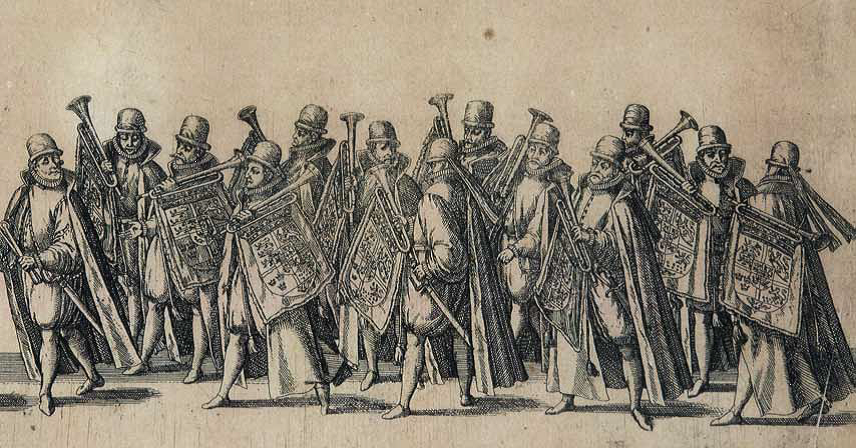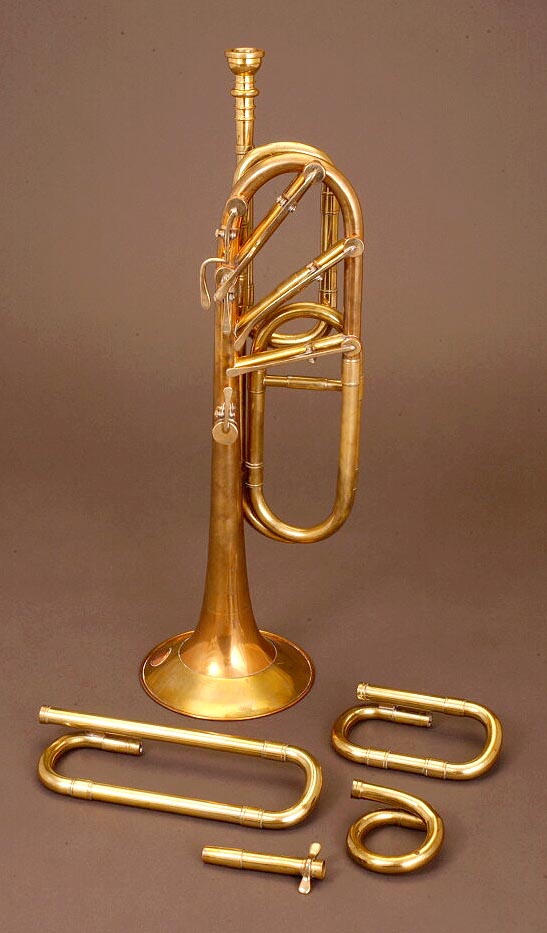DANISH BRASS 14

DANISH MUSIC FOR BRASS
Is a series of recordings with brass players from the Royal Danish Orchestra
as chamber music players or soloists
LIGHT CLASSICS 2
FOR TRUMPET AND ORGAN
PLAYED BY
KETIL CHRISTENSEN – TRUMPET
JENS E. CHRISTENSEN and PREBEN NØRGAARD CHRISTENSEN
– ORGAN

THE ROYAL DANISH ORCHESTRA

The Royal Danish Orchestra’s emblem, the Royal Trumpeter Corps. Engraving from 1583. The Royal Danish Orchestra is the the world’s oldest orchestral institution. It started out 1448 as a trumpeter corps, and today it is an opera and symphony orchestra based at the Royal Opera in Copenhagen.

JENS E.. CHRISTENSEN and KETIL CHRISTENSEN

KETIL CHRISTENSEN studied at The Royal Danish Academy of Music with Kurt Petersen and became only 19 years old principal trumpet in The Royal Danish Orchestra. Co-founder of The Royal danish Orchestra Brass Ensemble and member of the chamber orchestra Collegium Musicum, Copenhagen. Has made many recordings and engagements as soloist. in 1980 he won a prize at the international competition for soloists in Munich and has later been a member of the jury at the same competition in 2018. Has been teaching trumpet at The royal Danish Academy of Music. The recipient of the Gade Scholarship and Gladsaxe Music Award.

JENS E. CHRISTENSEN (1946-) Organist at The Church of Our Saviour in Copenhagen. His concert career has taken him all over the world and many composers has written works dedicated to him.


PREBEN NØRGAARD CHRISTENSEN

Preben Nørgaard Christensen (1960 – 2016) was organist in Bistrup and Thisted churches, teacher at the Vestervig School of Music and the Academy of Music in Ålborg and one of the leading danish Brass Band conductors as well as conductor of Thisted boys and mens choir.


The most used instrument for playing with the organ is the trumpet. The trumpet symbolizes a messenger and when it illuminates through the organ’s broad sound it can express the deeply lyrical, the heroic, the divine and the down-to-earth. Ever since the Baroque era and up to today, composers and arrangers have taken advantage of these opportunities. On this recording, a number of arrangements of well-known pieces and original compositions show the many possibilities for expressions that are present when these two instruments appear together.


HENRY PURCELL: SOUND THE TRUMPET
Jens E. Christensen – organ with Ketil Christensen – trumpet,Olav Ploug-Jørgensen – trumpet


J.S. BACH: SCHÄFE KÖNNEN SICHER WEIDEN
Jens E. Christensen – organ, Ketil Christensen – trumpet, Arr.: Mogens Andresen


JEAN BAPTISTE LOEILLET: LITTLE SONATA
Preben Nørgaard Christensen – organ, Ketil Christensen – trumpet, Arr.: Mogens Andresen
I – ALLEGRO
II – LARGO
III – ALLEGRO


LEOPOLD MOZART: SUITE IN F – MAJOR
Jens E. Christensen – organ with Ketil Christensen – trumpet, Olav Ploug-Jørgensen – trumpet. Arr.: Mogens Andresen
I – MARCH
II – ARIA
II – POLONAISE


WOLFGANG AMADEUS MOZART: EXULTATE JUBILATE
Jens E. Christensen – organ, Ketil Christensen – trumpet,
. Arr.: Mogens Andresen


WOLFGANG AMADEUS MOZART: ELVIRA MADIGAN THEME
Jens E. Christensen – organ, Ketil Christensen – trumpet, Arr.: Mogens Andresen


JOSEPH-HECTOR FIOCCO: ALLEGRO for TRUMPET and ORGAN
Preben Nørgaard Christensen – organ. and arr., Ketil Christensen – trumpet,


FELIX MENDELSSOHN – BARTHOLDY: O, FOR THE WINGS OF A DOVE
Jens E. Christensen – organ, Ketil Christensen – trumpet, Arr.: Mogens Andresen


CHARLES GOUNOD: AVE MARIA
Jens E. Christensen – organ, Ketil Christensen – trumpet, Arr.: Mogens Andresen


IL EST NÉ, LE DIVIN ENFANT, FRENCH CAROL
Preben Nørgaard Christensen – organ and harpsichord and arr. With Bo Juel Christiansen – flute, Ketil Christensen – trumpet,
Lars Ole Shmidt – piccolo trumpet
and the Moravian – Silesian Chamber Orchestra and Pavel Vitek conductor


TAMASO ALBINONI: ADAGIO
Jens E. Christensen – organ. Arr. Remo Glazzoto


ADOLPHE ADAM: CANTIQUE DE NOËL
Jens E. Christensen – organ with Ketil Christensen – trumpet, Olav Ploug-Jørgensen – piccolo trumpet. Arr.: Mogens Andresen


OSKAR LINDBERG: OLD SWEDISH HYMN TUNE
Preben Nørgaard Christensen – organ and arr., Lars Ole Shmidt – piccolo trumpet, Ketil Christensen – trumpet,
and the Moravian – Silesian Chamber Orchestra and Pavel Vitek conductor


JEAN LANGLAIS: LITTLE SUITE
Preben Nørgaard Christensen – organ, Ketil Christensen – trumpet,.
I – CANTABILE
II – MODERÉ
III – VIVO


ROLF WALIN: ELEGY
Arr.: Mogens Andresen, Preben Nørgaard Christensen – organ, Ketil Christensen – trumpet,
and the Moravian – Silesian Chamber Orchestra and Pavel Vitek conductor


JOHANN SEBASTIAN BACH’s STAR-TRUMPETER GOTTFRIED REICHE (1667 – 1734)
Engraving (1727 ) after a painting by Gottlob Haussman.

Mogens Andresen
THE TRUMPET AS A MELODIC SOLO-INSTRUMENT
The trumpet has always been perceived as a messenger and a signal instrument as it is heard at the beginning of John Sebastian Bach’s Christmas Oratorium:


TRUMPET PARTS FROM THE START OF THE CHRISTMAS ORATORIO BY J.S. BACH.

In the Baroque period one could only play the so-called natural tones, but in the high register where the tones are close, one could play soft and melodic, It was called CLARIN-PLAYING, and the famous trumpeters of the baroque area was known not only for their dramatic fanfare-playing but also for their ability to play softly in a singing vocal style.


THE ENGLISH TRUMPETER VALENTINE SNOW (1700-1770),
“THE FINEST TRUMPETER IN ENGLAND AND AMONG THE BEST IN EUROPE”,


KEYED TRUMPET

Around 1775 new attempts came up to build trumpets with holes, just like earlier in the renaissance when the Cornett ( the zink ) appeared, though this time with a key system to close the holes (like woodwind instruments). It was the Viennese court trumpeter Anton Weidinger (1767-1852) who developed a trumpet with 5 keys. He did not invent it, as some have believed, but developed his own instrument (Klappentrompete) that could play chromatically based on earlier examples of keyed trumpets. Joseph Haydn (1732 – 1809) and Nepomuk Hummel (1778 – 1837) wrote their concertos for him and now thrills, chromatic runs and diatonic melodies replaced the standard fanfare motifs. 

ANTON WEIDINGER (1767-1852)

When the valve system was invented in 1815, the trumpet – and even more its cousin the cornet – became full chromatic. It was used in both military bands and in all kind of entertainment music.


Bb-CORNET WITH 2 VALVES MADE BY CURTOIS FRANKRIG 1833. Metropolitan Museum New York


“BOURGEOIS PARTY” Lithography by H. Dumier, 1852


TRUMPET in G WITH BERLINER-PUMPEN, MARKNEUNKIRCHEN, GERMANY ca. 1860

But composers also wrote for the instruments classical music. Giuseppe Verdi (1813 – 1901) has written melodically for the cornet in the opera don Carlos (1867), Tchaikovsky (1840 – 1893) in the ballets The Swan Lake (1876) and The Nutcracker (1892) and Wagner (1813 – 1883) for the trumpet in the opera Parsifal (1882).


JEAN BAPTISTE ARBAN(1825-1889)
– the first big virtuoso on the cornet
When the cornet arrived, there was a lot of discussion about if the cornet or the trumpet was the best instrument. The first cornets had a much softer sound than the cornets of today, so the difference between the cornet and the brilliant trumpet was quite big. Arban was a of cause a unconditional defender of the cornet in hopes of making it as popular as a solo instrument as the flute or the violin.

The great popular breakthrough for the trumpet and the cornet as melody instruments and solo instruments came with the wind band movement. The cornet became the leading solo instrument in melodic beauties and in virtuoso variations of known melodies. John Philip Sousa (1854 – 1932) had one of the most famous wind bands ever and he managed to have 3 of his time’s leading virtuoso cornet players in the band:

HERMANN BELLSTEDT (1858-1926 ), DEL STAIGERS (1919-1950, HERBERT CLARKE (1867-1945)

Since then, the trumpet with its powerful and lyrical voice has been melody carrier in all kinds of music. And if there has been a shortage of it, new trumpet players have always come on track. Trumpet has been dominant in TV-film music, just think of it: Star Wars, Indiana Jones, Superman, Dynasty etc.In an interview in 1957, Eddie Calvert was asked how the “melodic” playing has caught on ? He answered: “I just happened to come along at a time when there was no one else playing melody line and recorded O, Mein Papa – It’s as simple as that.”


“EDDIE” CALVERT (1922 – 1978), ENGLAND, was launched as “THE MAN WITH THE GOLDEN TRUMPET”. He succeeded with a melodic repertoire played with a big warm sound and a “Mexican” vibrato. His best-selling hits “worldwide” were: “Oh Mein Papa” and “Cherry Pink and Apple Blossom White”.




































